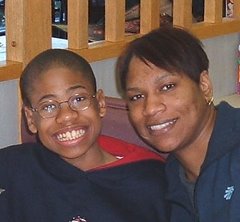CDC Autism Prevalence Findings Consistent With Vaccine Mercury Role in Autism Increase; SafeMinds Review Shows Numbers Clear on Epidemic
5/5/2006 12:11:00 PM
To: National Desk, Health Reporter
Contact: Jamie Shor, 202-628-7772 or Jshor@venturecommunications.com
WASHINGTON, May 5 /U.S. Newswire/ -- The Centers for Disease Control and Prevention (CDC) in Atlanta today released new figures showing the alarming prevalence of autism in this country, with about 1 in 175 school aged children having an autism diagnosis. However, a review of the study by SafeMinds has found that the CDC's interpretation of their own numbers is missing half the story -- the half that says that the dramatic rise in autism in the 1990s is real and corresponds to the increased exposure to mercury from infant vaccines.
"The study, while valuable in showing that autism rates are high, also substantiated that the rate of autism has increased during the 1990s, and that the rate of autism among children born after 1992 are at epidemic proportions of 6.8-7.6 cases per thousand," said SafeMinds Executive Director Sallie Bernard. The rate of autism among children in the study born 1986-1992 were much lower, 4.1-4.6 cases per thousand, about 3/5 the rate of the children born after 1992. "The rise in autism rates for children born after1992 as compared to those born between 1986 and 1992 corresponds to increased exposures from mercury in infant vaccines. Two new mercury-containing vaccines were added to the infant schedule in 1990-1991, and it is after this time period that the rate in autism increased dramatically."
During its press conference on the study findings, the CDC tried to explain away the increase, saying autism trends could not be derived from the study and that the higher rate of autism among children born from1992 onward could be due to broadening of diagnostic criteria or to the older children losing their autism diagnosis. These excuses are disputed by SafeMinds and other autism organizations. The differences in prevalence rates between the age groups of the study are statistically significant, meaning they are unlikely to have occurred by chance, so the study does have value in understanding autism trends. There is no evidence that changes in diagnostic criteria would have effected children born 1986-1992 less than those born after 1992. Historically, only 10 percent-15 percent of autistic children later lose their diagnosis, not enough to explain the huge differences in prevalence between older and younger age groups.
"The CDC does not want to acknowledge the increase in autism because it implicates mercury in vaccines," explained Bernard. "The CDC is in charge of vaccine safety, so proof of harm from vaccines reflects poorly on them. Looking at the way they have spun these results, they have dropped the ball again in their handling of the autism epidemic."
---
The Coalition for SafeMinds (Sensible Action For Ending Mercury-Induced Neurological Disorders, http://www.safeminds.org ) is a private nonprofit organization founded to investigate and raise awareness of the risks to infants and children of exposure to mercury from medical products, including thimerosal in vaccines. Safe Minds supports research on the potential harmful effects of mercury and thimerosal.
###
For information, resources and practical strategies on autism visit:
www.child-autism-parent-cafe.com
www.AutismConcepts.com
Forget what you haven't heard… Family site shares news, resources, announcements and free or low-cost ways to help us manage day-to-day living with autism.
Crystal Brown

About Me

- Crystal
- AutismConcepts.com and Child-Autism-Parent-Cafe.com share a large collection of useful autism information, resources, and how-to articles written by authors who are touched by autism, offering practical solutions to families. Particularly minority and underserved families and caregivers who may not know what to do or where to go for help.
MJ And Me

Blog Archive
-
▼
2006
(213)
-
▼
May
(26)
- Heavy metals may be implicated in autism
- Study: US scientists back autism link to MMR
- Wrightslaw programs to be held in PA in June
- Unmasking The Unscientific JAMA 2006 Childrens Ama...
- NYS - Use of Aversives: Second Request:
- "Autism Every Day" - Powerful Video by Autism Speaks
- Pilot Study to Enhance Conversational Skills
- Public Hearing Announcement - May 31, 2006
- Study: Autistic brains 'never daydream'
- Army Releases Autistic Teen
- Senator launches autism inquiry, calls for help fo...
- Minority and multiracial children experience many ...
- Helping Hand Program for Single Parents in Dire Fi...
- "Helping" Autistic People to Speak
- Pediatricians Fail to Screen for Autism, Johns Hop...
- Vaccine makers helped write Frist-backed shield law
- DynaVox Virtual (On-line) Trainings May/June 2006
- Immune system, blood altered in autism
- Autism - The signing of a disabled Portland man de...
- CDC Autism Prevalence Findings Consistent With Vac...
- Autism Benefit at Carolines on Broadway
- Anderson School in Poughkeepsie, NY begins 'villag...
- Study: Environmental Mercury Release, Special Educ...
- Study: Changes in belief systems of families of ch...
- New ADHD Treatment Will Go on Hip
- Invitation to Participate in a New Research Study ...
-
▼
May
(26)